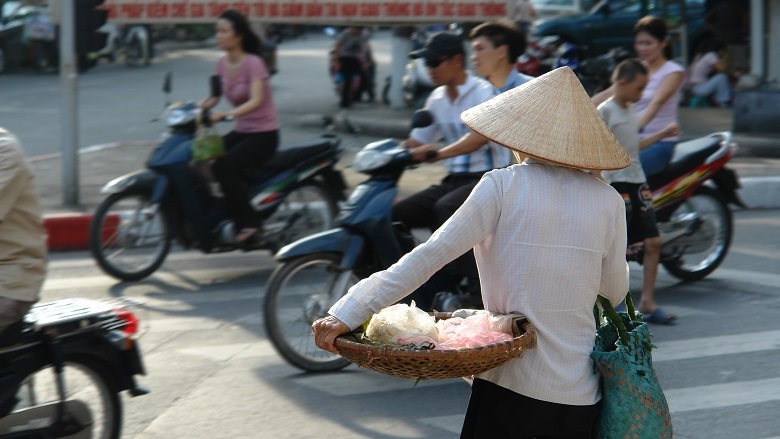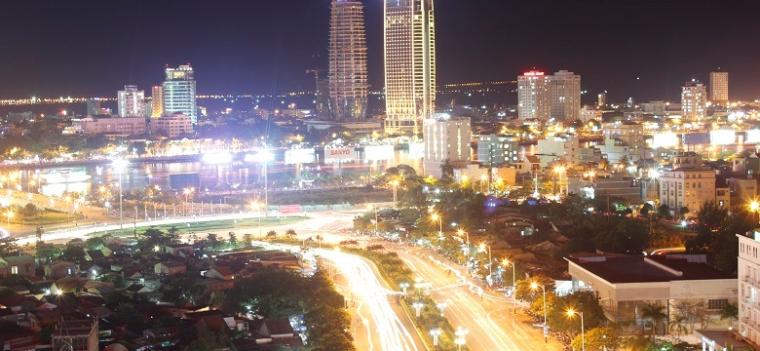News
- The World Bank is helping Da Nang, Vietnam, translate its city environmental plan into action through a series of targeted investments in energy efficiency and green infrastructure.
- Among the projects being proposed are replacement of existing mercury vapor street lighting with efficient LEDs, and a modern waste treatment center that would generate electricity from methane gas.
- The projects were identified through the ‘Sustainable Urban Energy and Emissions Planning’ (SUEEP) process, which helps cities identify projects with the highest energy savings and emissions reduction potential.
Southeast Asia’s urban population is growing rapidly, with 55 percent of its people expected to live in cities by 2030. In Da Nang, central Vietnam, the population is expected to reach 1.65 million by 2020 – nearly double its 2010 population.
Such growth makes it challenging to balance increasing demand for energy and services with the need for sustainability. But Da Nang, now the fifth largest city in Vietnam, is on a path to show how it can manage rapid expansion without drastically increasing its levels of energy consumption or greenhouse gas emissions.
Da Nang’s city government has made a strong commitment to low carbon urban development, adopting a city environmental plan in August 2008. The World Bank is helping the government translate that plan into action through the Sustainable Urban Energy and Emissions Planning (SUEEP) process, which provides a framework to help cities mobilize financing and carry out a series of investments in energy efficiency and green infrastructure.
Da Nang was one of three pilot cities for SUEEP in the East Asia/Pacific region, along with Cebu City, Philippines and Surabaya, Indonesia. The preliminary findings from audits of these cities informed the design of the SUEEP guidebook, which provides a comprehensive framework and step-by-step guidance to help a city develop its own energy and emissions plan.
With funding from the Asia Sustainable and Alternative Energy Program (ASTAE), Da Nang is currently applying the SUEEP report findings.
“SUEEP’s tools helped us analyze the city’s energy and emissions profile, determine targets for reduction, and identify investment opportunities for energy efficiency projects,” says Mr. Nguyễn Đình Phúc, Deputy Director of Da Nang’s Department of Industry and Trade and Chairman of the city’s Energy and Emissions Task Force. “The Green Business Plan, for instance, identified a long list of project initiatives, which was then reduced to a shortlist following a screening assessment based on the city’s capacity, priorities, and relative benefits. We are now looking at five projects that have strong energy and emissions reduction potential as well as being attractive to private investment.”

Of the five projects, energy efficient LED street lighting is the furthest along in the development process. The pilot project targets 6,000 light posts, approximately 10 percent of the city’s street lighting. Through this project, replacing inefficient mercury vapor lighting with energy efficient LEDs would reduce energy used for public lighting by 67 percent and save an estimated $290,000 per year in energy and maintenance costs. With these savings, the project would pay off its $1.6-million investment in a little over 6 years. The transition to LED lighting would also mean automated control of lighting, and better quality, more reliable, and lower maintenance units. Philips Lighting, a global manufacturer of lighting, is currently evaluating the costs and technical feasibility of the project with Da Nang Public Lighting Operations & Management Company. If successful, the pilot will be followed by a scaled-up, citywide plan involving other private investors.
Another proposed SUEEP project is a sewage and sludge treatment facility. Household septic systems in Da Nang generate about 62,000 cubic meters of waste per year, the majority of which is disposed of illegally and improperly, creating environmental and health problems for the city’s residents. The proposed project would develop a pilot public-private partnership where one private operator collects, transports, and treats the organic waste at the treatment facility. The facility would have a capacity of treating 500 cubic meters per day. In addition to the benefits of a cleaner environment, properly treated sludge can be used for fertilizer or ash for construction and methane gas for electricity generation. A later phase of the project would upgrade the facility with anaerobic technology for electricity generation. Da Nang is currently determining the financial and political viability of the project.
The other SUEEP projects, which are in the feasibility study stage of development, include a proposal to tap Da Nang’s solar potential by developing a private solar power supply for industry and commerce. South Central Vietnam has strong solar power generation potential, but as of 2012, only 3 MW of solar arrays had been installed in Vietnam, compared with 362 MW in neighboring Thailand. To determine the project’s feasibility, Da Nang will need to conduct a market survey of commercial and industrial demand for renewable energy and further research on estimates of solar potential and future electricity prices.
A proposed project at Khanh Son landfill, which receives all city waste – about 800 tons per day, would extract and convert landfill gas into electricity. If sufficient landfill gas is available, the second stage of the project would develop a larger conversion engine to deliver electricity to the local grid.
The final project proposes to double the number of bus lines in Da Nang, introducing five additional routes with 92 new buses to expand higher quality bus service to the city. Limited routes and poor quality service and infrastructure have led to low bus usage. A new proposed system could increase use of public transportation in the long term but poses a short-term risk to private operators who depend on ticket sales for revenue. More studies are needed to assess potential demand and determine cost-effective ways of subsidizing investor risks.
ASTAE recently received grant approval from the Korean Green Growth Trust Fund to move forward on next steps for the SUEEP program in Da Nang. ASTAE will work with the Public-Private Infrastructure Advisory Facility (PPIAF) and the International Finance Corporation’s Public-Private Partnership Transaction Advisory Department (IFC C3P) on the follow-up work. The SUEEP task team will provide overall supervision while IFC C3P and PPIAF conduct preliminary studies on identified public-private partnerships.
